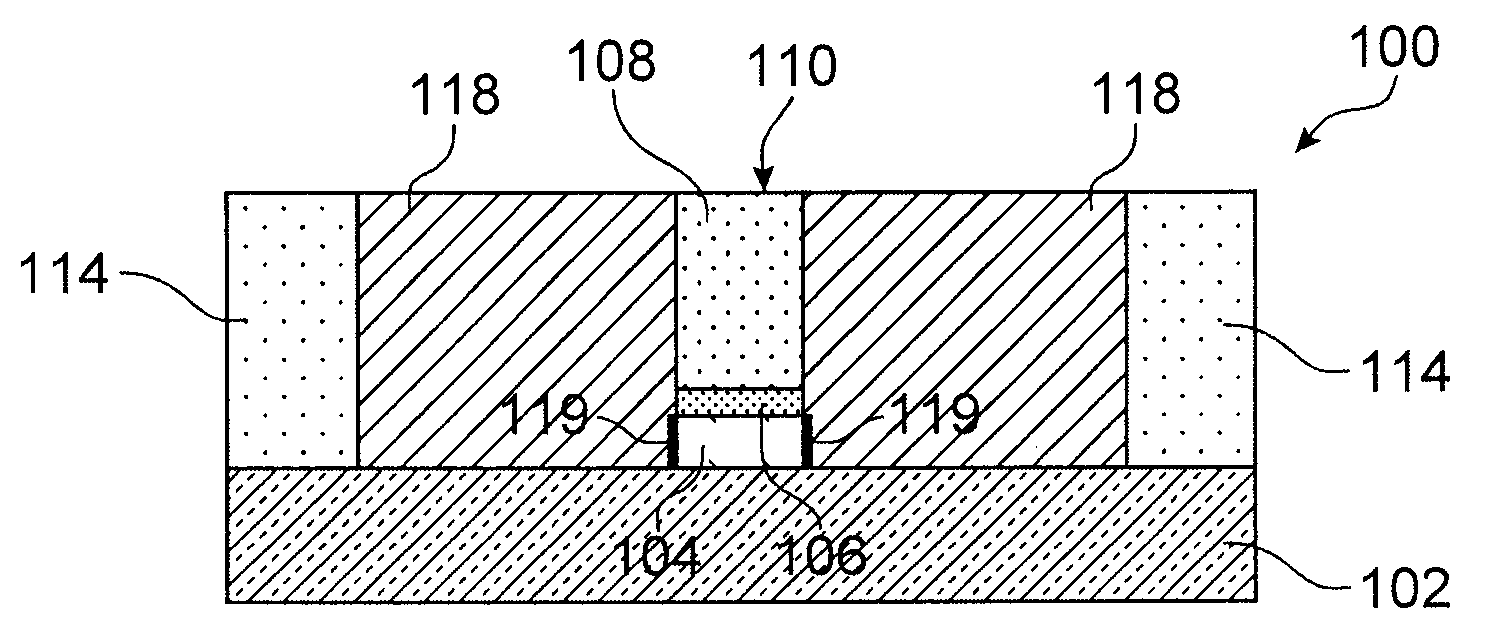Device for measuring metal/semiconductor contact resistivity
- Summary
- Abstract
- Description
- Claims
- Application Information
AI Technical Summary
Benefits of technology
Problems solved by technology
Method used
Image
Examples
Embodiment Construction
[0086]Reference is made first to FIGS. 3 to 8, which show the steps of a process for manufacturing a device 100 for measuring the resistivity of an interface between a semiconductor and a metal.
[0087]As shown in FIG. 3, the process is implemented by starting with a stack comprising a dielectric layer 102, in this case being oxide-based and having a thickness equal to approximately 145 nm, on which is deposited a semiconductor-based layer 104 intended to form the interface, e.g., made of silicon, and having a thickness equal to approximately 70 nm. In this case, the dielectric layer 102 and the semiconductor-based layer 104 thus form an SOI-type substrate. In one alternative, the semiconductor of layer 104 could likewise be germanium, then forming, together with the dielectric layer 102, a GeOI (germanium-on-insulator) type substrate. The dielectric layer 102 and the semiconductor-based layer 104 generally form a semiconductor-on-insulator type substrate.
[0088]The thickness tsi of th...
PUM
| Property | Measurement | Unit |
|---|---|---|
| Thickness | aaaaa | aaaaa |
| Thickness | aaaaa | aaaaa |
| Thickness | aaaaa | aaaaa |
Abstract
Description
Claims
Application Information
 Login to View More
Login to View More - R&D
- Intellectual Property
- Life Sciences
- Materials
- Tech Scout
- Unparalleled Data Quality
- Higher Quality Content
- 60% Fewer Hallucinations
Browse by: Latest US Patents, China's latest patents, Technical Efficacy Thesaurus, Application Domain, Technology Topic, Popular Technical Reports.
© 2025 PatSnap. All rights reserved.Legal|Privacy policy|Modern Slavery Act Transparency Statement|Sitemap|About US| Contact US: help@patsnap.com



